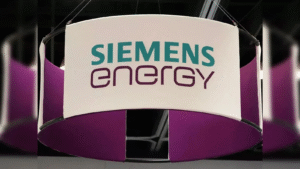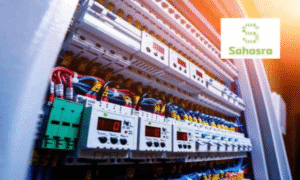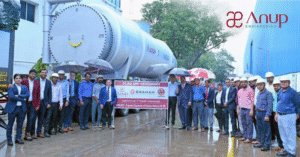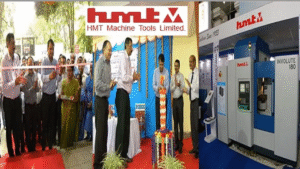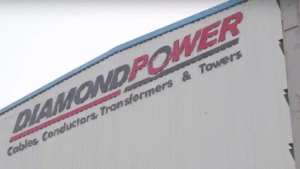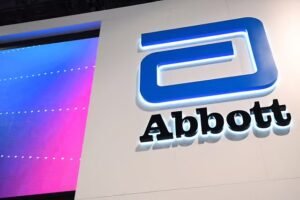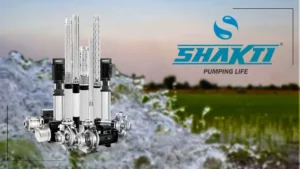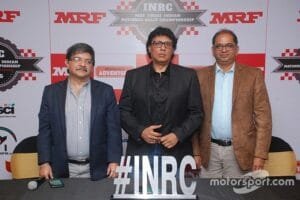1. At a Glance
Sahasra Electronic Solutions is the scrappy new kid on India’s electronics block — IPO in October 2024, semiconductor ambitions in Noida SEZ, and a management deck full of hockey-stick revenue projections. The stock listed at ₹1,013, crashed to ₹252 (down ~75%), and now trades with the grace of a parachute missing half its threads. With FY25 revenue of ₹96 Cr, negative PAT, and an EV/EBITDA of 52×, this is less a “value pick” and more “Bollywood startup biopic waiting to happen.” Still, the story is spicy: 65% revenue from EMS, 11% from its semiconductor venture, and 51% exports.
2. Introduction
India dreams of becoming a semiconductor powerhouse. Sahasra dreams of being the poster child. Incorporated in 2013, this Noida-based ESDM company does everything fromPCB assembly to IT hardware, memory products, LED lighting, and chip packaging.
What really gets investors excited: Sahasra Semiconductor (subsidiary) — already manufacturing chip packages like QFN, DFN, BGA, NAND Flash, eMMC, etc. While global giants are dropping billions into fabs, Sahasra’s talking about scaling its ₹10 Cr semiconductor revenue into a ₹200 Cr Phase-II investment plan. That’s like comparing a street food cart with a McDonald’s franchise — but hey, India needs both.
The IPO in October 2024 was fully subscribed (₹186 Cr raised), promising growth, R&D, and shiny semiconductor dreams. One year later, investors are sitting on losses as steep as Noida flyovers. Still, management insists: “By FY27, we’ll hit ₹325 Cr sales, 30% EBITDA margin, and 15% net margin.” Translation: “Give us 2 years, we’ll turn from Maruti 800 to Tesla.”
3. Business Model (WTF Do They Even Do?)
Sahasra is basically a buffet restaurant for electronics.
- EMS (65%)– PCB assembly, wire harness, box builds. Bread-and-butter business, with 32% gross margin.
- IT Hardware (15%)– Motherboards, DRAMs, SSDs, USB drives. Commodity products = weak margins (5%).
- Memory Products (11%)– SSDs & DRAM modules. Decent margins, but highly cyclical.
- Semiconductors (11%)– Their moonshot. Chip packaging (eMMC, NAND, LED drivers IC). 15% GM, high capex.
- Lighting (4%)– LED drivers, PCBs. Small contribution, 20% GM.
Industry exposure is diversified: IT & telecom
(35%), industrial (25%), auto (15%), healthcare (10%), consumer electronics (10%), defense (5%). Exports now account for 51% of revenue, which is rare for an SME ESDM player.
So yes, the model is:run an EMS factory, dabble in IT hardware, and pitch semiconductor as the big sexy story.
4. Financials Overview
Quarterly Snapshot (₹ Cr.)
| Metric | Mar 2025 | Sep 2024 | YoY % | QoQ % |
|---|---|---|---|---|
| Revenue | 49.6 | 46.3 | +7.1% | +7.1% |
| EBITDA | -0.6 | 8.1 | NA | NA |
| PAT | -3.5 | +1.9 | NA | NA |
| EPS (₹) | -1.40 | +2.19 | NA | NA |
Annualised EPS = ₹1.12 → P/E = NA (since PAT is negative).
Commentary: One quarter up, one quarter down. Volatility looks more like a crypto chart than a manufacturing SME.
5. Valuation (Fair Value RANGE only)
Method 1: P/S
- FY25 sales = ₹96 Cr.
- Apply 3–5× sales (SME peers like Syrma, Dixon trade here).
- FV = ₹288–₹480 Cr (₹115–₹190/share).
Method 2: EV/EBITDA
- EBITDA FY25 = ₹8 Cr.
- Apply 20–25× (optimistic).
- FV = ₹160–₹200 Cr EV (~₹65–₹80/share).
Method 3: DCF (Management’s dream case)
- FY27 revenue = ₹325 Cr, 15% net margin = PAT ₹49 Cr.
- EPS = ₹20. P/E band 25–30×.
- FV in 2 years = ₹500–₹600/share.
👉Consolidated FV Range: ₹70 – ₹600/share.Yes, that’s absurdly wide. Because the company itself is absurdly binary.
⚠️ Disclaimer:This FV range is for educational purposes only and not investment advice.
